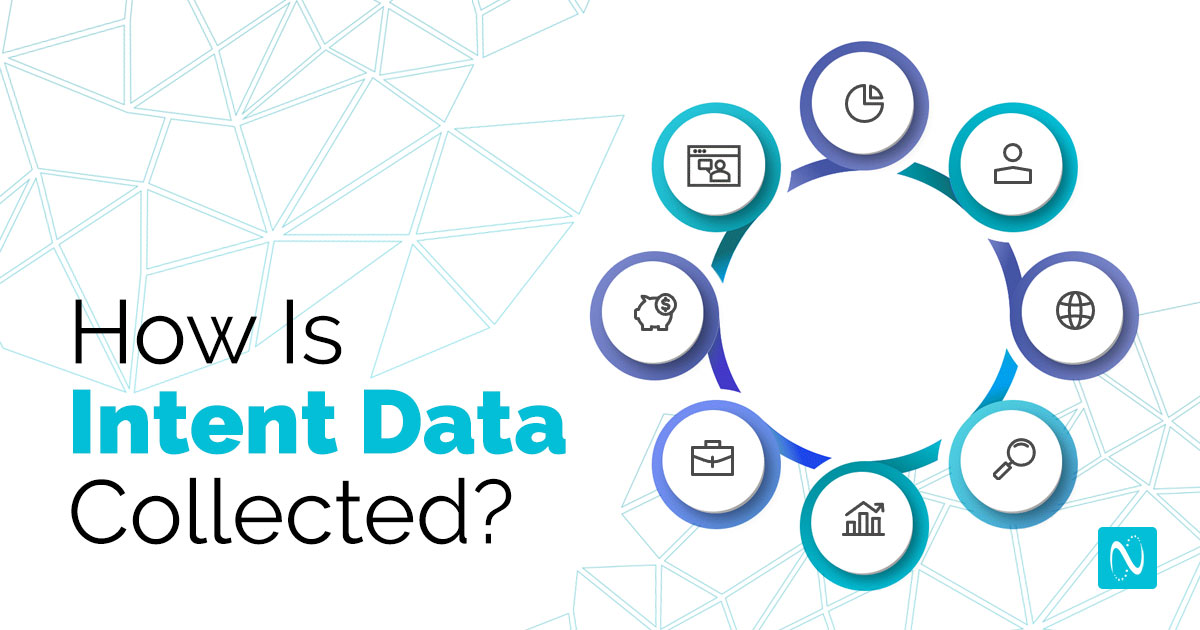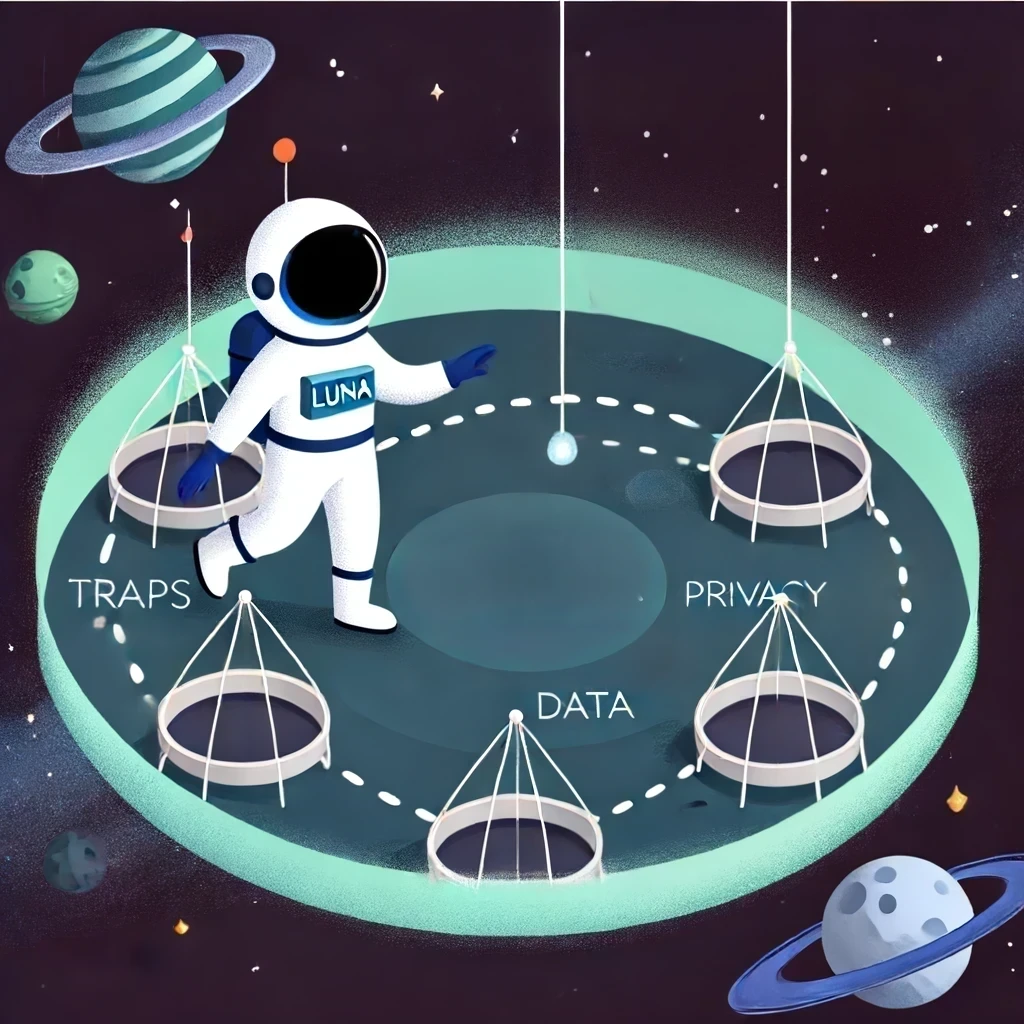Every business’s goal is attracting and converting leads into loyal customers.
Doing this requires B2B sales and marketing teams to possess a deep understanding of prospects’ pain points and purchase behavior. In recent years, account-based marketing (ABM) and inbound marketing have been the primary means of procurement.
Today, these tactics aren’t as successful. So what’s a B2B pro to do?
Enter intent data.
In this post, we’re diving into everything you need to know about how intent data is collected.
Key Takeaways
|
What is intent data?
Intent data, also referred to as purchase intent or buyer intent data, inform organizations of the type of questions potential leads have so sales and marketing teams can provide the answers they’re searching for.
Intent data refers to a collection of consumer online behaviors that indicate whether a prospect has identified a problem, is actively searching for a solution, or has become interested in a specific product or service.
A simple way to remember intent data is that it is what a lead intends to do.
For instance, a buyer actively comparing products in your category likely intends to make a purchase soon. In contrast, a prospect reading up on your category type likely only intends to research.
Intent data is based on the type of content a prospect consumes. By revealing what type of content a buyer is reading—such as product reviews or comparison pages—an organization can begin to sell and market to prospects that are ready to buy (and stop wasting resources on those that are not).
All of this is great information.
How this data is acquired is just as relevant as the insight it provides.
So, how is intent data collected?
Intent data encompasses the range of online research a potential buyer is conducting across the web, including downloading resources from your company website and interacting with customer testimonials on third-party review websites.
As such, intent data is collected in numerous ways.
The top methods of B2B intent data collection are from first, second, and third-party sources.
1st Party Intent Data
First-party data refers to insights collected through channels your organization owns, such as your company website and email campaigns. These channels allow your sales and marketing teams to gather relevant high-quality information in near real-time and communicate with leads directly.
First-party data is all about the one-to-one relationship between a business and its audience/prospects/customers. It can be collected through cookies and IP addresses to follow leads across your website, content hubs, and company-run communities, such as forums. These insights can also be collected directly from consumers themselves, such as through online surveys and company contact forms.
Methods to collect first-party intent data include but are not limited to:
- Gathering data from your customer relationship management (CRM) platform
- Retrieving data from buyer actions on your company website or mobile app
- Analyzing data inputted on customer surveys or contact questionnaires
- Usage of smartforms which collect relevant user details in exchange for content
- Sourcing data from buyer email or subscription campaigns
2nd Party Intent Data
Second-party intent data refers to first-party insights collected by one company and provided to another through an intent data partnership or a monetary payment.
The company collecting first-party data typically has a direct relationship with the consumers whose insights they sell.
For instance, many second-party intent data sources are software review platforms, such as Capterra and TrustRadius. These platforms operate with the consent of users to track insights like opinions on product features and on-site behavior, then aggregate, anonymize, and sell the data.
Methods to collect second-party intent data include but are not limited to:
- Gaining contact information through gated content on review sites, such as demo videos
- Analyzing product category engagement on software review websites
- Assessing product vendor interactions on software review platforms
- Reviewing customer surveys through software review providers
3rd Party Intent Data
Third-party intent data refers to insights collected from outside sources that maintain indirect relationships with consumers at the time data is obtained. Third-party data providers scour the internet for consumer insights that can be anonymized and sold to reveal relevant buyer intent.
Data providers often monitor hundreds of thousands of channels to gather user insights, from advertising networks and consumer search history to governmental and academic sources. These insights are typically segmented into categories like keywords or stages in the marketing funnel.
Methods to collect third-party intent data include but are not limited to:
- Acquiring behavioral data from a content publisher’s network of websites and apps
- Paying for consumer online activity, like recent searches, through data providers
- Purchasing bidstream data from ad publishers’ websites or applications
- Obtaining consumer ad engagement via third-party providers
Which intent data collection method is the best for B2B?
With so many marketing and sales activities reliant on relevant and timely consumer insights, intent data collection is integral for B2B organizations.
Take a look at the pros and cons of each data collection method for B2B marketers.
1st Party Data Collection
First-party data is often considered the top data collection method for B2B because it incurs no additional costs to gather; however, there are still a few drawbacks that can limit its effectiveness.
Pros
First-party intent data collection is both budget- and privacy-friendly, particularly for B2B organizations that must adhere to data protection requirements, such as the Health Insurance Portability and Accountability Act (HIPAA) and General Data Protection Regulation (GDPR).
There are no additional costs to collect first-party data because it’s sourced directly from channels your business owns, such as your company website. Plus, with your company at the helm of collecting and storing consumer insights, it’s much simpler to ensure regulatory compliance.
Likewise, first-party intent data can be easily connected to specific contacts or accounts your team has been working on—like learning a prospect from a company you’re targeting has signed up for an upcoming webinar. Similarly, these insights are controlled to better match your marketing needs.
Cons
Though it’s advantageous to your budget, the fact that first-party intent data is limited to your owned channels restricts the visibility and volume of the insights you acquire. Because there is a limited reach, you will only receive insights through actions taken on your company channels.
So, despite its benefits, first-party intent data alone lacks a lot of the scope required to inform effective sales and marketing initiatives. Similarly, it lacks the scale offered by larger data providers. Plus, it can be difficult to aggregate and analyze first-party data from across your organization.
2nd Party Data Collection
Second-party intent data is also referred to as downstream intent, as it contains actionable insights gleaned from outside sources that collected the data directly from consumers. But at what cost?
Pros
Second-party data is sourced from real buyers who are currently reading product reviews and running provider or pricing comparisons. In terms of the marketing and sales funnel, second-party data relies on bottom-funnel signals, which indicates that these buyers are preparing to purchase.
Compared to first-party data, second-party insights make it easier for sales and marketing teams to communicate with prospects who are ready to buy. And because 2nd party data is derived from larger review websites, it comes with more context, higher volume, and a higher degree of accuracy.
Cons
The most obvious con of second-party data collection is the additional cost. While most second-party data originates from data partnerships, they will likely incur some kind of cost. The added cost makes it difficult to compare providers unless your company has a steep budget.
Moreover, the majority of second-party data is constrained to the bottom funnel. Though these insights are beneficial, they lack details on top-of-funnel activity. This makes it difficult to identify accounts that have just located a problem and begun researching, giving competitors an advantage.
3rd Party Data Collection
Third-party data collection unlocks access to a massive volume of buyer activity; however, you can become reliant on outside providers that may not adhere to industry data protection standards.
Pros
Third-party intent data collection opens the door to the highest volume of buyer insights with the most market coverage. In other words, third-party data collection is the key to accessing outside sources that provide a broader view of accounts’ purchase intent beyond bottom-funnel activity.
Unlike second-party intent data collectors, which aggregate and anonymize insights only, third-party data collectors take it a step further to segment these insights by topical intent. Topical intent can then inform a keyword strategy that better targets and resonates with potential buyers.
Cons
Like second-party intent collection, gathering third-party insights will come at an additional cost. However, it also comes with additional insights, many of which you must sift through to identify reliable signs of purchase intent. Third-party data alone is not a full picture of the sales funnel.
Because it can stem from ad publishers, 3rd party data may be limited to top-of-funnel signals. For this reason, the topical intent behind searches may require additional details to convert buyers. Plus, it’s integral to find a provider that’s transparent and compliant with consumer data collection.
A combination of 1st Party and 3rd Party Data Collection
First-party intent data collection and third-party intent data collection alone may not provide the full picture of the marketing and sales funnel, but combined, they’re much more impactful.
Pros
Third-party intent data helps provide context to the first-party intent data your organization has collected. For instance, learning that a prospect who’s been viewing your company’s accounting software website has also interacted with paid ads about analytics helps reveal the pain points they want your solution to address.
Likewise, because third-party data collection often informs organizations of prospects who have just entered the marketing and sales funnel, organizations can leverage first-party data to initiate communication. This combination allows B2B brands to remain a step ahead of the competition.
Cons
Though third-party data is often quite robust, it is not as reliable as the insights your B2B organization has sourced directly from potential buyers. Therefore, there is a necessity to vet third-party data providers and confirm the accuracy against the first-party insights you already own.
More importantly, relying on first- and third-party data alone often neglects much of what occurs as prospects make their way through the funnel. With the addition of second-party intent data, your organization can track leads as they begin research, build a shortlist of options, and finally, convert.
A combination of 1st Party, 2nd Party and 3rd Party Data Collection
When it comes to B2B organizations, no initiatives provide a 360-degree view of the entire marketing and sales funnel quite like a combination of first, second, and third-party data collection.
Pros
As mentioned above, a combination of first, second, and third-party intent data collection covers every base as prospects make their way through the funnel. While third-party data may provide insight into the top of the funnel, second and first-party data encompass the middle and bottom.
With a combination of all intent data collection methods, sales and marketing teams can not only identify new leads in near real-time but also understand their pain points and purchase behavior. This process allows for seamless targeting as prospects make their way to ultimate conversion.
Cons
Though a combination of first, second, and third-party intent data collection provides the most robust insights, it also comes at the steepest cost. While B2B organizations can directly gather their own first-party intent data, second and third-party data will each incur separate costs to obtain.
Moreover, the addition of various intent data sources increases the pressure on B2B organizations to maintain proper data protection requirements, such as HIPAA and GDPR. With additional data sources comes the need to ensure that data providers are transparent about how data is collected.
Pitfalls to avoid when collecting intent data
Here are the top struggles to keep in mind when collecting intent data.
Allowing departments to work in silos
Intent data encompasses multiple departments, so it requires the inclusion of all relevant teams.
Sales reps must be in contact with the marketing department, which tracks the progression of leads through the funnel. They must also be in contact with the content team, who is responsible for creating website pages, product comparison articles, and gated content (like ebooks) that address topical intent.
In other words, there’s no room for silos when collecting and analyzing intent data.
Neglecting data protection standards
Data protection standards aren’t merely suggestions, they’re mandatory processes for all B2B organizations. If your organization already collects first-party intent data, it’s essential you comply with standards like HIPAA and GDPR when obtaining, analyzing, and storing consumer insights. It’s equally as crucial to vet any second or third-party data providers to ensure regulatory compliance.
Quantity taking precedence over quality
What good is a high volume of data if it’s also low-quality? Accuracy must be at the top of mind for intent data collection. Even though a large quantity of intent data is necessary to segment prospects into targeted lists, that data must be timely and relevant for effective marketing and sales initiatives.
Waiting too late to act on sales-ready leads
Whether it’s first-party data collection (like a prospect submitting a demo request form) or second-party data collection (like a prospect comparing product vendors), much of intent data identifies sales-ready leads. Waiting to act on these prospects allows time for competitor sales reps to close the deal in their favor instead. It’s essential to have a timely reaction to intent data signals.
How to do B2B intent data marketing the right way
With the above pitfalls of B2B intent data collection in mind, it’s vital to identify methods to deploy intent data marketing the right way. These four tips can help maximize the impacts of intent data.
Provide intent data in real-time
To avoid waiting too late to act on sales-ready leads, it’s wise to provide intent data to the relevant departments in as close to real-time as possible. For instance, imagine a prospect begins researching topics related to your business or views a software comparison page with your product.
By creating a workflow that alerts sales reps to this activity, you can leverage intent data in near real-time. For example, an automated trigger on your company’s CRM can instantly deliver intent data to allow reps to communicate with hot leads or have marketers develop related materials.
Prioritize bottom-funnel leads
Allow intent data to prioritize your list of accounts by the highest likelihood of converting. Intent data should reveal which accounts are at the top, middle, and bottom of the funnel. By prioritizing bottom-funnel leads, you direct resources to those more likely to make a purchase decision sooner.
Personalize your outreach
Beyond a funnel stage, intent data also reveals exactly what a prospect is looking for—whether it’s viewing a specific product page on your website or comparing two software vendors. From previous online activity to recent Google searches, understanding the topics leads are searching for allows you to customize your content marketing and personalize your outreach for optimal close rates.
Protect against churn risk
Intent data is not relevant to new customers alone. On the contrary, it can also reveal when a current customer is browsing through competitor vendors on software review sites and inform you if they’re at risk of churn. To keep your churn rate low and customer lifetime value (CLV) high, assess current customer intent data and include remarketing campaigns with your intent data initiatives.
How NetLine can help with your intent data collection
Regardless of your existing marketing abilities, procedures, or technology, NetLine is committed to assisting you. Our aim is to ensure that no one overlooks the immense potential that intent data holds. We invite you to discover these possibilities and understand how your sales and marketing performance could skyrocket. Connect with our team today.



